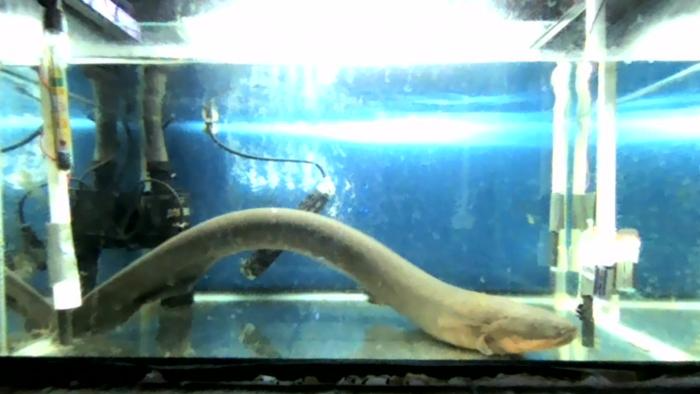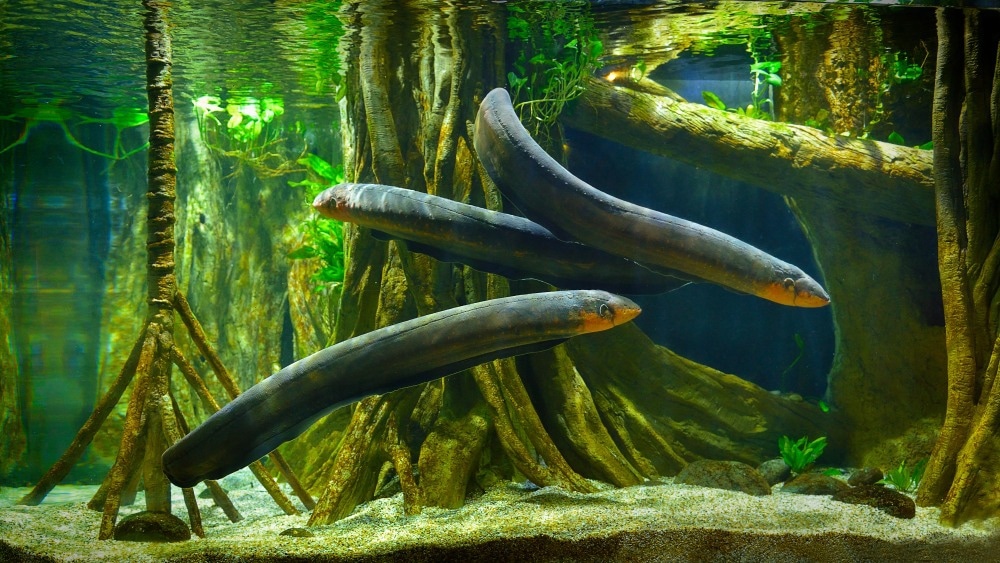Reviewed by Danielle Ellis, B.Sc.Dec 6 2023
The electric eel holds the title of Earth’s most powerful electricity-producing creature, boasting the ability to unleash up to 860 volts—enough to power machinery.
 Researchers discovered that electric eels, the biggest power-making creature on Earth, can release enough electricity to genetically modify small fish larvae. Image Credit: Shintaro Sakaki.
Researchers discovered that electric eels, the biggest power-making creature on Earth, can release enough electricity to genetically modify small fish larvae. Image Credit: Shintaro Sakaki.
In a recent study conducted by a research team affiliated with Nagoya University in Japan, it was revealed that electric eels have the capacity to generate sufficient electricity for the genetic modification of small fish larvae.
Published in the journal PeerJ-Life and Environment, this discovery provides valuable insights into the field of electroporation, a technique used for delivering genes. Electroporation utilizes an electric field to temporarily create pores in cell membranes, facilitating the entry of molecules such as DNA or proteins into targeted cells.
Professor Eiichi Hondo and Assistant Professor Atsuo Iida, who lead the research group at Nagoya University, initiated this study with the hypothesis that electric currents in a river might influence the cells of nearby organisms. Their investigation focused on the incorporation of DNA fragments from the environment, referred to as environmental DNA, by cells.

Image Credit: tristan tan/Shutterstock.com
To conduct experiments, the researchers exposed young fish in their laboratory to a DNA solution containing a luminous marker, observing whether the zebrafish assimilated the DNA. Subsequently, they introduced an electric eel, prompting it to bite a feeder and discharge electricity.
Assistant Professor Atsuo Iida challenged the common belief that electroporation is limited to laboratory settings. Despite its typical association with controlled environments, Iida expressed skepticism, emphasizing the potential real-world impacts of this phenomenon.
I thought electroporation might happen in nature. I realized that electric eels in the Amazon River could well act as a power source, organisms living in the surrounding area could act as recipient cells, and environmental DNA fragments released into the water would become foreign genes, causing genetic recombination in the surrounding organisms because of electric discharge.”
Atsuo Iida, Assistant Professor, Nagoya University
The scientists found that 5% of the larvae exhibited markers indicating successful gene transfer.
This indicates that the discharge from the electric eel promoted gene transfer to the cells, even though eels have different shapes of pulse and unstable voltage compared to machines usually used in electroporation. Electric eels and other organisms that generate electricity could affect genetic modification in nature.”
Atsuo Iida, Assistant Professor, Nagoya University
Previous investigations have noted a comparable occurrence in natural settings, where phenomena like lightning impact nematodes and soil bacteria. Iida expresses considerable enthusiasm for the potential of electric field research in living organisms, suggesting that these effects surpass the comprehension of conventional wisdom.
I believe that attempts to discover new biological phenomena based on such ‘unexpected’ and ‘outside-the-box’ ideas will enlighten the world about the complexities of living organisms and trigger breakthroughs in the future.”
Atsuo Iida, Assistant Professor, Nagoya University
Source:
Journal reference:
Sakaki, S., et al. (2023) Electric organ discharge from electric eel facilitates DNA transformation into teleost larvae in laboratory conditions. PeerJ. doi.org/10.7717/peerj.16596.